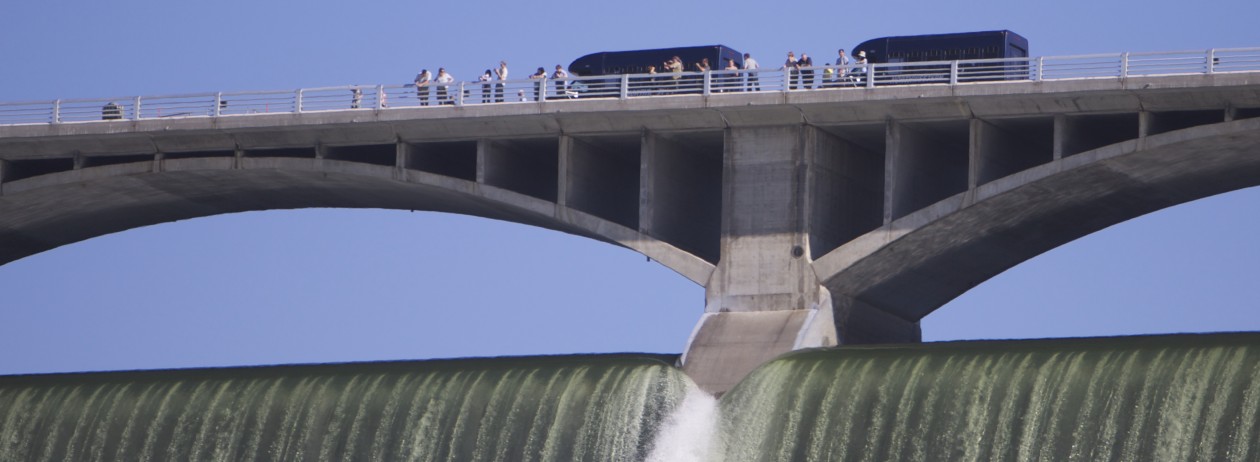Official prediction: water to spill over the top

This year’s Fourth of July will be dramatically different at Grand Coulee Dam and on Lake Roosevelt behind it.
You’ll be able to watch the dramatic spill at Grand Coulee Dam this weekend or over the Fourth of July holiday.
It’s rare, but this year’s climate conditions actually lead to a fairly stable prediction: expect water to overtop Grand Coulee Dam for at least a week and a half.
The long, cool spring, coupled with a double the normal snowpack in the mountains upstream (including Canada) from Grand Coulee has led to a later-than-normal spring runoff, and a big one at that.
Lake Roosevelt is quite low for this time of year, but very accessible, with great big beaches – hundreds of miles of them.
And visitors to the Grand Coulee Dam Festival of America July 2, 3 and 4 will be able to get an up-close view of the 300-foot-high, half-mile wide waterfall that will cool the park below the Visitor Center at the dam.
Over the last month, dam operators have been regulating the rise of the lake by “spilling” water through outlet tubes in the middle of the dam big enough to drive a truck through.
From 50,000 to 100,000 cubic feet per second shoots through those tubes into the river below. That’s up to about 750,000 gallons each second, less than half the river’s flow of about 2 million gps.
My house is about a half mile from the face of the dam, and my kitchen cupboards rattle just a little from the impact.
A more serious problem is that the resulting air injected into the water kills fish downstream, which take in too much nitrogen-saturated water through their gills.
A fish farm 20 miles downstream raising 2.7 million steelhead trout was losing them by the thousands. That operation has now apparently lost at least 100,000 of its big triploids, and anglers are snatching them up in Lake Rufus Woods — that part of the Columbia River between Grand Coulee and Chief Joseph dams.
Even so, operators will need to keep spilling through the outlet tubes even after the water tops the dam until enough volume is spilling over for a controlled spill, said Bureau of Reclamation Public Affairs Officer Lynne Brougher.
When you see the nice spill, realize that the management of the flow at this dam is the key to managing a river draining an area the size of France so that Portland, Ore. and points downstream does not flood.
Not letting the lake fill too quickly is critical in that plan.
“Actually,” Bougher said, “the system is working as it was designed to do this year.” She said the lower Columbia has been held right at flood stage, “and we’ve still got room” to fill the lake.
Normally full by July 4, Lake Roosevelt will likely be full about July 10 or 11, she said.
